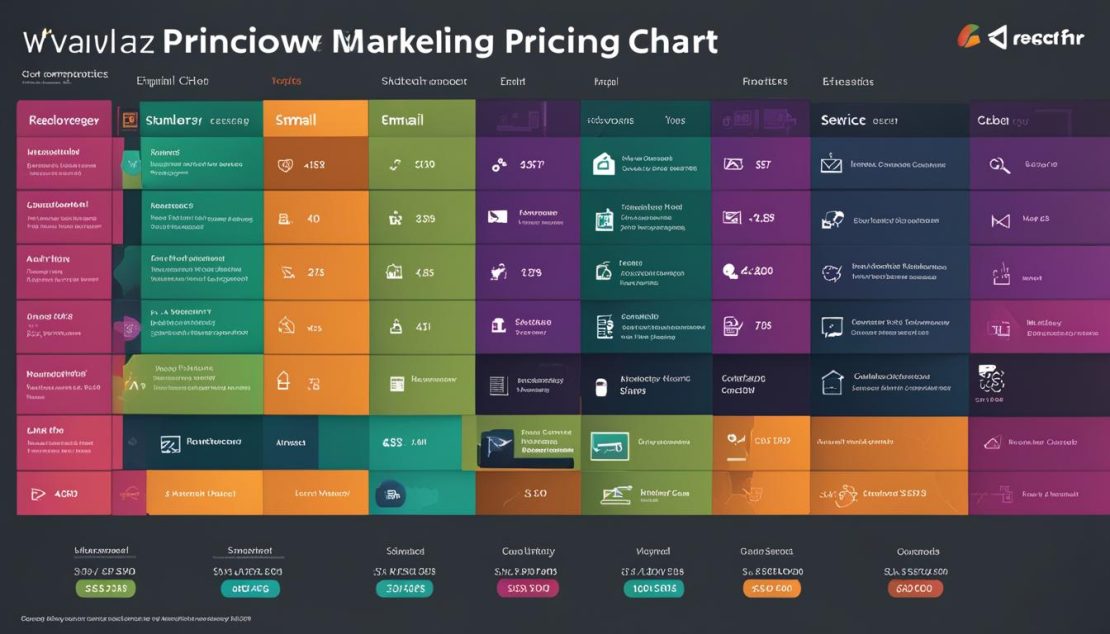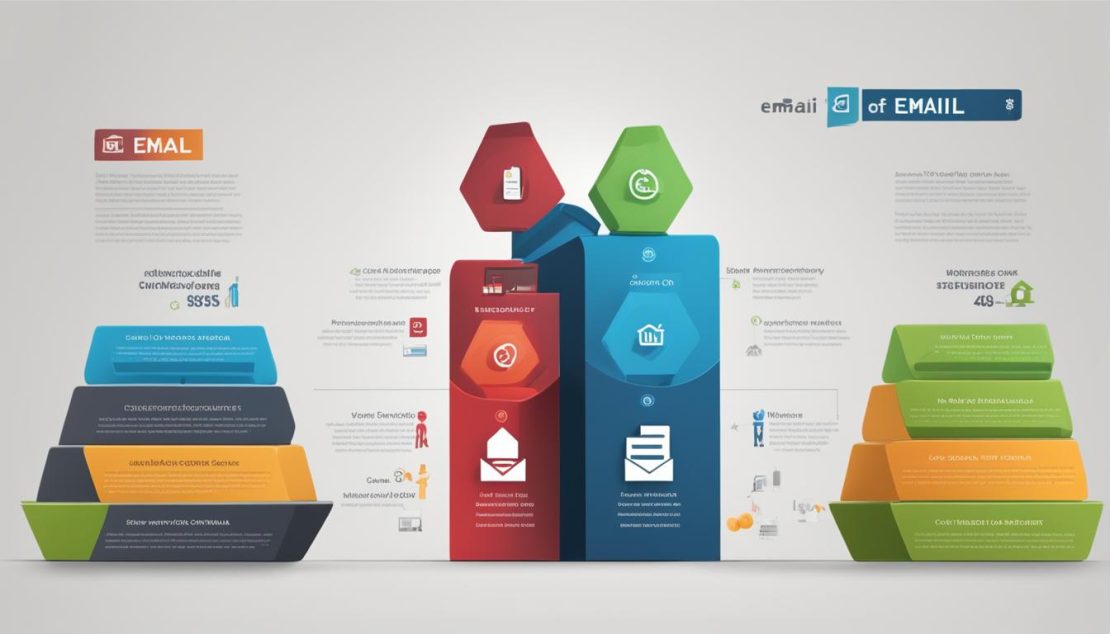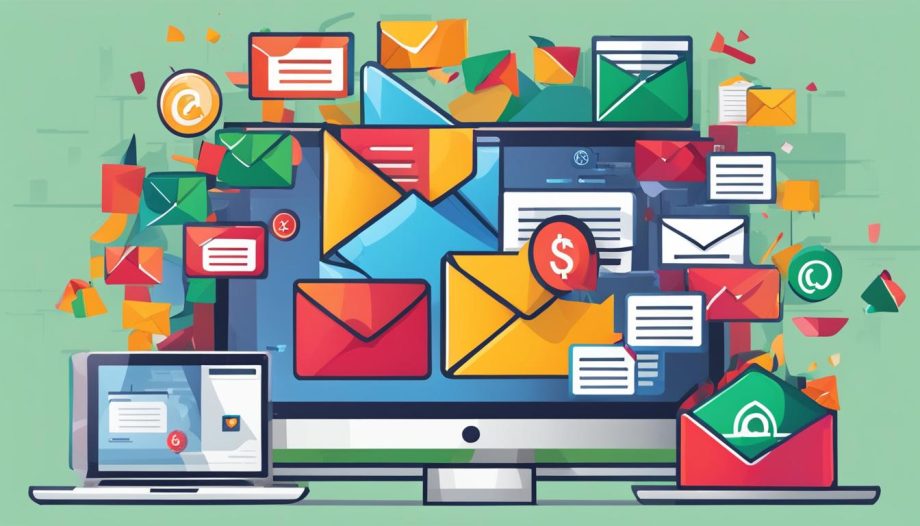Peeling back the layers of an email marketing budget, you’ll discover that the cost of email campaigns can be as varied as the businesses that utilize them. Nonetheless, understanding the essentials of an email marketing investment is crucial for any enterprise aiming to reach its audience effectively. It’s not just about the funds, it’s about investing wisely in a channel known for its exceptional return on investment.
Whether you’re a fledgling startup or a well-established company, the allure of affordable email marketing is undeniable. This initial dive into the financial aspect of email strategies aims to offer businesses a clear outline of potential costs and the factors at play. As we unpack the typical expenses and considerations, we set the stage for the comprehensive planning and execution of successful email outreach endeavors. Stay tuned as we explore the nuances of email marketing and its cost implications for your business.
Understanding Email Marketing Cost Structures
When considering the adoption of email marketing, businesses are faced not only with the potential for a high return on investment but also a variety of associated costs. A critical look at email marketing pricing models reveals various financial requirements. Grasping these costs is essential for crafting a budget that aligns with marketing objectives without ensuing surprises.
Initial Setup and Subscription Costs
Getting started with email marketing often involves setup fees that can differ radically depending on your choice of platform. These costs take into account account creation and integration with existing systems such as CRMs or e-commerce platforms. The ongoing expense, typically a subscription fee, can be equally diverse. Service providers offer multiple tiers ranging from basic to advanced features, and each tier carries its pricing model, the choice of which depends on your business needs and scale.
The Role of Contact List Size in Pricing
Another critical aspect influencing email marketing expenses is your contact list size. The cost per subscriber increases in proportion to the list size, dictating the scalability of your marketing endeavors. As a business grows its subscriber base, the email marketing platform subscription may transition between pricing tiers, leading to an incremental but planned increase in costs.
Cost Implications for Email Design and Content Creation
A powerful email campaign relies on engaging content and eye-catching design. Email template design expenses and content development costs constitute a significant portion of the budget. While some businesses may have in-house capabilities, others might require external creative services, which can amplify the expenditure. Attention to the intricacies of a well-conceived design and high-value content cannot be undervalued, as they directly contribute to campaign performance and audience engagement.

Considering these cost factors in email marketing is pivotal for an effective strategy. By understanding the fundamental pricing models, subscription fees, and associated design and content expenses, businesses can develop a targeted approach that maximizes their marketing dollars while tailoring campaigns that resonate with their audience. Real-world cost examples further contextualize these expenses, offering tangible benchmarks for budgetary planning.
Email Marketing Cost: Tools and Services Breakdown
As businesses of all sizes turn to digital channels to reach their customers, understanding the financial investment in different email marketing tools and services becomes quintessential for effective budgeting. Let’s delve into the specifics of how these tools are priced and what you might expect in terms of costs for various features and additions.
Popular Email Marketing Platforms and Their Pricing
Email marketing software is essential for creating, sending, and analyzing campaigns. Some of the notable platforms include Mailchimp, which offers a sliding scale of service tier pricing depending on the number of subscribers. Constant Contact provides a similar structure, while Sendinblue opts for a unique approach, charging based on the volume of emails sent rather than the size of your contact list.
Categorizing Costs: Free, Freemium, and Paid Services
When starting out, many companies might gravitate towards free email tools which provide the fundamentals without any financial outlay. As needs grow, the transition to freemium services, which offer some premium email features at no cost, becomes a viable midpoint. Eventually, fully-fledged paid services with advanced capabilities and comprehensive support could be the most logical step.

Assessing the Cost of Integrations and Add-ons
The true power of email marketing often lies in its ability to integrate with other systems such as CRM platforms and e-commerce solutions. Add-on pricing for these integrations can vary, but they play a crucial role in streamlining processes and providing valuable data insights that can dramatically improve the efficacy of email marketing efforts.
| Service | Free Tier Offerings | Premium Features (Starting Price) | Notable Add-ons |
|---|---|---|---|
| Mailchimp | Basic templates, 2,000 contacts | Custom branding, automation ($9.99/month) | Behavioral targeting, multivariate testing |
| Constant Contact | Limited trial period | Email plus plan with dynamic content ($45/month) | E-commerce integration, surveys and polls |
| Sendinblue | 300 emails/day, unlimited contacts | Advanced segmentation, heat map ($25/month) | Facebook ads, landing pages |
Identifying Hidden Costs in Email Marketing
Embarking on an email marketing journey can be an exciting endeavor, but it’s essential to be aware of the hidden expenses that can lurk beneath the surface. One of these obscured costs is the time invested in deciphering campaign analytics. Often termed as ‘analysis paralysis,’ this aspect can eat into valuable hours that could otherwise be spent on strategic decisions or creative processes. Without a streamlined approach to data, the hours spent can become a significant hidden cost to the business.
Another area ripe with potential for hidden costs arises from deliverability issues. These are challenges linked to the effective landing of emails in your subscribers’ inboxes. Poor email campaign strategies can result in high bounce rates and blocked messages, which not only waste resources but can also tarnish your sender reputation. Moreover, email list maintenance costs should not be underestimated. Keeping a clean, engaged, and high-performing list necessitates ongoing attention and tools, which can add up in the long run.
Finally, compliance costs with regulations such as GDPR and CAN-SPAM are non-negotiable for responsible marketing practices. Staying compliant is crucial not just legally, but also for maintaining consumer trust. Businesses may need to invest in legal advice, technology solutions, and regular training to ensure these regulations are consistently upheld. By being cognizant of these less obvious financial demands, companies can craft a more realistic and effective email marketing budget, allowing for improved management and allocation of their marketing investment.

